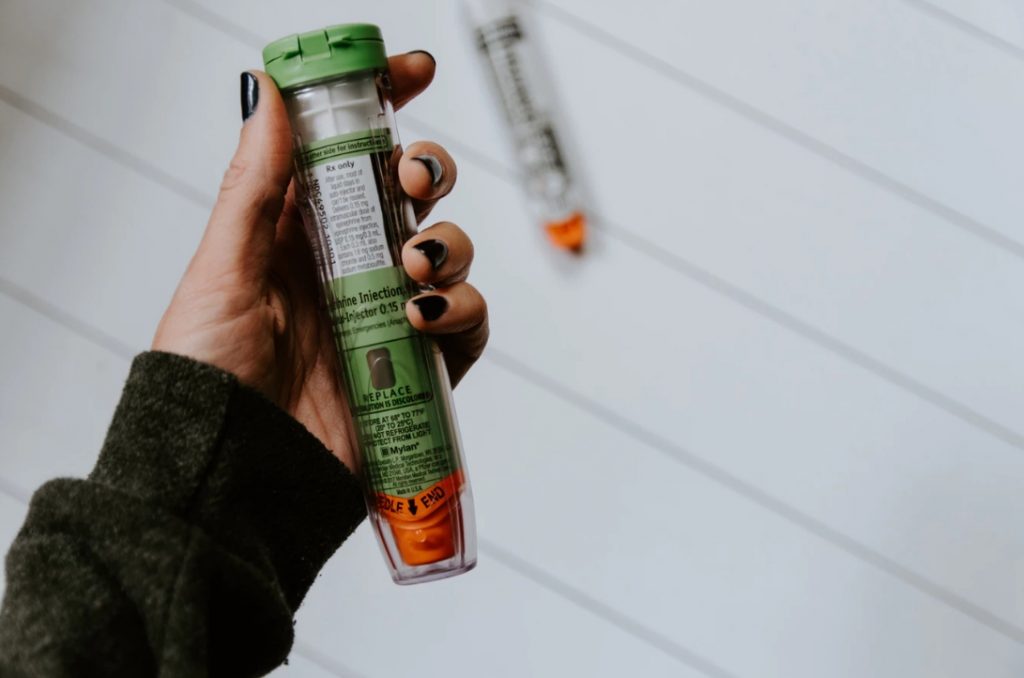Talk about a delayed reaction
Posted: 23rd January 2018 | Posted by Costa
Talk about a delayed reaction
When it comes to severe allergic reactions, most of us are familiar with the expression ‘anaphylactic shock’. But we don’t always fully understand the extent of its seriousness. Anaphylaxis is usually a sudden reaction after exposure to a variety of allergens. It can take the form of an itchy rash, swelling of either the throat or tongue, and rapidly leads to lightheadedness and low blood pressure. In extreme cases, it can result in death. So it’s vital the early onset is caught immediately by administering an injection of adrenaline. (epinephrine) This prevents further development of reaction and the potential for death.
Anaphylaxis
In the US alone, anaphylaxis is the cause of roughly 1,500 deaths a year. It affects up to 15% of the population. Main causes of anaphylaxis are allergies to food, venom, drugs, and latex. It’s a little-known fact that anaphylaxis draws many similarities to a volcano. For the most part, sufferers know the risk exists, but have a disaster plan in place. Unfortunately, the extreme allergen-induced reaction carries another parallel to its naturally occurring counterpart: it can lie dormant.
This is known as ‘biphasic anaphylaxis’, and differs slightly from its more commonly-known cousin. Biphasic anaphylaxis takes place long after the initial shock and exposure to an allergen. The host suffers from an ongoing recurrence allergy symptoms until a secondary bout of anaphylactic shock.
Several epidemiological studies have been conducted with the hope of understanding how common biphasic anaphylaxis actually is. Its dormant nature has made it difficult to report a precise finding. Regardless of not being able to pin down an accurate report, there are no two ways about it; biphasic anaphylaxis is on the rise and currently affects 1 in 5 people. The shock itself varies from person to person. The typical reaction, however, is milder and less life-threatening than the original anaphylactic episode.
The most significant challenge with it being an unpredictable reaction – quite like its natural disaster counterpart – is that it can be impossible to foresee when the second phase of the reaction will strike, as well as how long the ongoing symptoms will occur as both are notably variable.
Second wind
As with most reactions, it’s a challenge to determine a one-size-fits-all answer as to the trigger of biphasic anaphylaxis. In recent years there has been an emerging pattern as to those patients more likely to suffer a secondary shock. Severe anaphylaxis reactions that require a higher dose than usual in the first instance or take longer to ‘recover’ are more likely to result in a biphasic response.
While the usual ‘reaction’ remedies of antihistamines or steroids prove entirely ineffective against preventing biphasic anaphylaxis, they do minimise any other irksome topical symptoms such as itchy skin and hives.
As off-the-shelf treatment is no match for biphasic anaphylaxis, other methods must be carried out in preparation. Awareness is the first step. It’s vital that you and the key people in your life understand how to properly handle an adrenaline (epinephrine) auto-injector in readiness for a secondary reaction. The updated advice after European review is recommended that 2 adrenaline auto-injectors are prescribed, which patients should carry at all times.
Preparing yourself for the signs of anaphylaxis is critical as this can be the difference between life or death. Once you have one anaphylactic shock, you are susceptible to another, so it’s a good idea to keep yourself as prepared as possible in the event of an emergency.
To find out more, speak to our specialists about anaphylaxis and allergy testing to find out what has caused the reaction in the past or any other advice relating to allergies. Visit our website to book an appointment.

